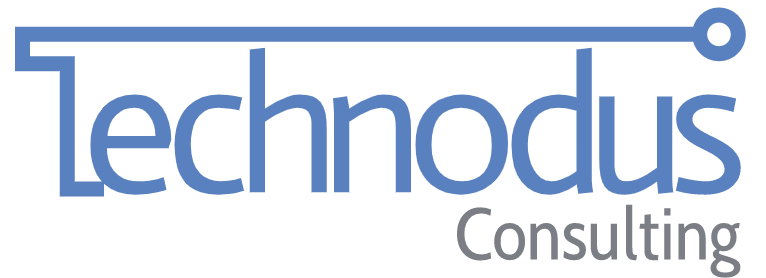5 Ways to Incorporate Technology into Your Business

Once modern technologies are in place, the benefits of implementing them often outweigh the short-lived challenges of the transitional process. Here are a variety of areas to review when you are ready to increase your use of technology within your business.
Technology can help business owners leverage limited capital in wiser, more efficient methods. Using technology can often provide greater efficiency and versatility, making it a natural progression for enhancing existing business processes. Other instances may require adjusting existing processes to ensure you can realize the benefits of tech-friendly alternatives. If you are interested, we discussed the debate of changing process over software in an earlier post.
1. Productivity
Productivity tools can increase efficiency within your business, allowing your employees to be more productive with less effort and work towards higher revenues. There are plenty of tools on the market today that can aid in increasing productivity through efficiency gains.
- Utilize time-tracking software like Harvest, Toggl, or Time Doctor to keep employees on track, improve estimation processes and charge clients for exactly what work as been done.
- Project management and task management tools like Harvest, Basecamp, Trello, or Asana can make project planning effortless and allow you to maintain balanced resource management.
- Document Signing systems like DocuSign or Panda Doc can help manage the flow of information within your organisation and improve collaboration and validation.
- Learning Management Systems like Learn, Sky Prep, or Moodle can be leveraged for training and onboarding your employees in optimised and repeatable methods
- Choose enterprise-grade hardware to run your business from laptops, to tablets, to mobile phones.
- Use remote access technologies like Microsoft RDS, TeamViewer, or GoToMyPC when you cannot operate from the cloud to ensure users have access to the tools they need for success
- Go paperless – save money on supplies, delivery, and storage in your office
2. Financial
Keeping on top of wasteful spending can make a significant difference to your company’s financials. Using tools that aid in either increasing margins or decreasing expenses is a skillful use of technology for a growing business.
- Online Invoicing and payment services like FreshBooks, Wave Accounting, or Invoicely can drastically increase cash flow and reduce past-due receivables with the added effect of reducing paper consumption.
- Comprehensive accounting and budgeting systems like Intuit QuickBooks, Sage Accounting, Wave Accounting, or Xero can be leveraged to properly track income and expenses and allow you to drill into all aspects of your business’s finances.
- Online store and e-commerce solutions like Shopify, Wix, and Squarespace can help to increase revenue channels while leveraging existing infrastructure and resourcing.
- Exploring open-source applications to replace costly off-the-shelf solutions can be a way to reduce operating expenditures.
3. Marketing
Technology can assist you in marketing your business more effecively by streaming workflows and increasing collaboration between different marketing channels. Finding the right solution for automating and managing various aspects of your marketing can have a huge effect on how well your marketing performs.
- Email & Marketing software like Mailchimp and HubSpot for managing campaigns and gathering leads
- Engagement and content analytics software like Google Analytics, Buzz Sumo, KW Finder, and Ahrefs for identifying how to target campaigns and analyse their results
- Automation software like Hootsuite, Buffer, and Sendible to send social media posts on a schedule and to multiple platforms at once.
- Blog platforms like Wix, Squarespace, WordPress, and HubSpot to create content that your audience can engage with and generate leads from.
4. Collaboration
In today’s remote based environment, collaboration has become ever so important to a successful business. Collaboration technologies can help coordinate teams and train them to increase their productivity.
- Videoconference solutions like Microsoft Teams, Zoom, and WebEx can ensure team members in various locations can connect quickly and efficiently
- Leverage webinar software like Zoom, Go To Webinar, and Livestorm for keeping customers engaged
- Cloud-based file management and storage services like Microsoft OneDrive for Business, Drive from Google Workspace, and Dropbox Business can be leveraged for sharing files and data.
- Chat software like Microsoft Teams, Slack, Google Chat for Workspace, and Discord can be used to communicate quickly and efficiently amongst your teams
- Virtual phone services, like Ring Central and Dialpad, and online fax services, like eFax Corporate and Fax Plus, can let you take traditional office communication online
- Use smartphones and select mobile apps that synchronise with cloud services to stay connected when you are on the go.
5. Customer Service
Leveraging tools to improve your relationship with customers has been around for a while, and now there are increasingly technological ways to continue to further customer engagement.
- Use social media, such as Facebook, Instagram, or What’s App, as a customer service channel and/or communication tool
- Use custom engagement platforms like Twilio, HubSpot, and Chat Bot to let customers get to information quickly and efficiently either via automated interactions on chat platforms or text messages.
- Help Desk platforms like Zendesk and Freshdesk can be leveraged to manage customer issues
- Survey platforms like Survey Monkey, Typeform, and Google Forms can be utilized to gain customer feedback and stay connected with how your customers perceive you
Conclusion
Incorporating technology into your business can provide significant benefits to your company’s productivity, fiscal management, marketing, collaboration, and customer service. By using the right tools and technologies, you can streamline your business processes, reduce costs, and enhance the customer experience. As you review the various areas discussed, think about how technology can fit into your existing processes and consider how you can leverage it to achieve your business goals. Embracing technology is an ongoing process, and it requires continuous evaluation and adaptation.
Originally posted by Chad Ross on DevFacto.com as 5 Ways to Incorporate Technology into Your Business

